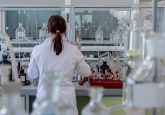Study calls for further investigation of synthetic cathinones to aid detection of illegal substances
A report from Sam Houston State University (TX, USA), calls for further investigation into the structural facets of synthetic cathinones and what influence these have on their stability. It is hoped this approach will aid the interpretation of the analogs and derivatives of emerging designer drugs.
Synthetic cathinones, commonly referred to as bath salts, are a type of recreational drug derived from cathinone, which is found in the khat plant. Some synthetic cathinones were banned by the Drug Enforcement Administration (VA, USA) in 2011, however new designer drugs continue to appear and this presents a real challenge for forensic laboratories.
Entitled ‘Improved Detection of Synthetic Cathinones in Forensic Toxicology Samples: Thermal Degradation and Analytical Considerations’, the paper is published in the Journal of Analytical Toxicology. Among the compounds studied were 4-EMC, 4-MEC, buphedrone, butylone, ethcathinone, ethylone, flephendrone, MDPBP, MMDPV, mephedrone, methcathinone, methedrone, methylone, MPBP, naphyrone, pentedrone, pentylone, PVP and pyrovalerone.
“State and federal efforts to curb the use of these drugs have had some success, but the proliferation of new synthetic cathinones presents an ongoing challenge to the forensic community,” explained Sarah Kerrigan from Sam Houston State University.
GC-MS is routinely used by many forensic laboratories to detect drug-use in biological samples recovered from fatalities, intoxication or impaired driving cases, however it must be noted that this process can actually degrade the sample. Alternative techniques such as LC-MS/MS or LC-Q-TOF are significantly more expensive and not all laboratories have this capability due to limited resources.
Despite the ban in 2011, manufacturers of bath salts were able to replace banned substances with alternatives to bypass the legislation. In addition to this, bath salts continue to be sold on the internet, thus making the laws more difficult to enforce. Also many toxicology labs do not test for these drugs; identifying them in seized drug materials such as pills and powders is more straightforward than detecting them in biological evidence. Drug instability and the possibility of thermal degradation during analysis often hamper analysis.
“The forensic community’s analytical methods must keep pace with illicit drug trends, but not all laboratories are capable of testing for these drugs despite the fact that their use may have very serious public health and safety consequences.” Sarah Kerrigan commented.
Sources: Bath salts difficult to detect in biological samples, SHSU study finds; Kerrigan S, Savage M, Cavazos, Bella P. Thermal Degradation of Synthetic Cathinones: Implications for Forensic Toxicology. Journal of Analytical Toxicology (DOI: 10.1093/jat/bkv099) (2016).





